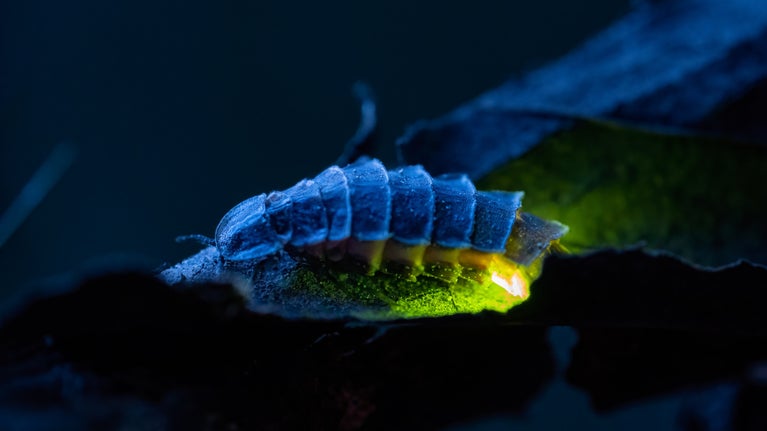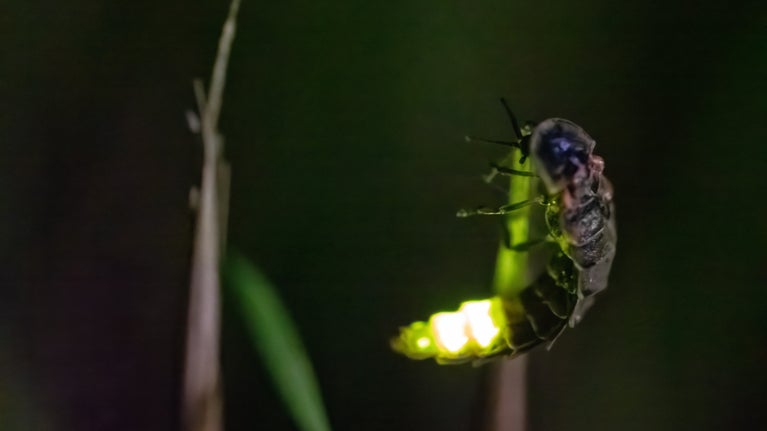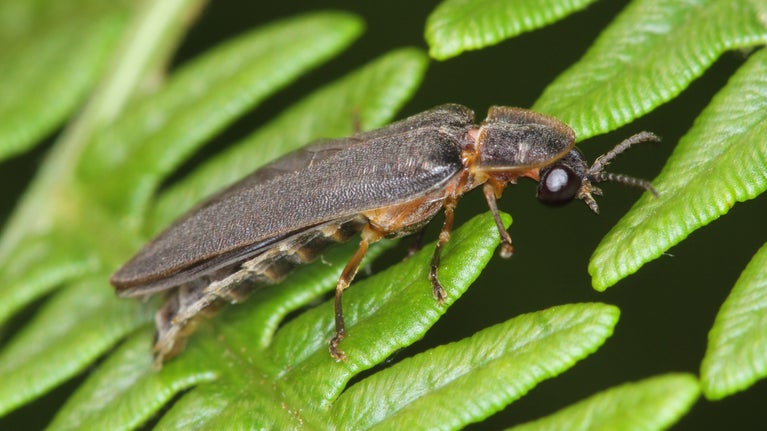Glowing report for glow worms at Sheringham Park
- Published:
- 22 August 2024

Record-breaking numbers of glow worms have been found at Sheringham Park this summer. Over 50 glowing females were counted on a single night, putting it in the top three locations for sightings in the UK this year. North Norfolk's dark skies provide a haven for this important insect population.
What is in fact a beetle up to 25mm long, glow worms were even commemorated as crucial participants in World War I, when they were collected in their thousands and kept in jars to illuminate maps and messages in blacked-out trenches.
Now an important glow worm population is bucking the insect’s apparent trend of decline and has been spotted in record-breaking numbers at Sheringham Park, arguably the best surviving example of landscape gardener Humphry Repton's work.
40 and 56 glowing females were counted this summer on dry, still and warm nights, under the darkness of a new moon. This is over double the amount documented on either night of the survey last year and the highest number recorded at Sheringham Park since the study began 10 years ago, as part of the UK Glow Worm Survey. From a UK-wide perspective, most other glow worm sites have documented single figures this year.

The magic of glow worms can be attributed to the bioluminescent abdomens of the females, which emit a cool green and orange-tinged light, as bright as an LED indicator on a TV. A wingless female in search of a mate will glow brightly and continuously for around two hours, after climbing a plant stem and curling her tail upwards to be seen by the large photosensitive eyes of flying males.
The survey at Sheringham Park is conducted by National Trust staff and volunteers slowly walking narrow transect routes, scanning either side of their path for glowing females. A light lure is also shone for a short period, to entice males to be counted and to determine their flight activity.
Male glow worms, larvae and even eggs have also all been known to glow, albeit faintly and intermittently. After hatching, larvae spend two years hunting and growing, over-wintering under rotten logs and fallen trees. Slugs and snails are its meal of choice which, like something from a horror film, it bites and injects with a paralysing toxin and liquifying digestive enzymes, so they may be slurped up like soup. Adult glow worms have a lifespan of only a couple of weeks and have no mouth parts with which to eat, with the females dying soon after laying their eggs.
Like many invertebrates experiencing devastating population declines, glow worm numbers have suffered in recent years. The record number of glowing females at Sheringham Park may point to a bottleneck of the insects looking for mates, as flying males could have delayed taking wing following the cool start to the season. However, it is heartening to find all elements of the population (males, females, larvae) across a wide area of the park over a period of years, indicating a resilient colony.
Robin Scagell, UK Glow Worm Survey Founder, said: “A landscape full of glow worms is an amazing natural sight. It's great to see that glow worms can still be found in good numbers at some locations, although nationally their numbers seem to be declining, and they are now listed as Near Threatened by the International Union for Conservation of Nature. In some parts of the country, numbers were well down, so much more research is needed into glow worms.”
Sheringham Park is in an area of North Norfolk renowned for its dark skies – an increasing rarity across lowland England. The biggest threat to the future of the glow worm is light pollution, followed by habitat loss and fragmentation, use of pesticides and herbicides and attack from parasites. Although a female’s glow is remarkably bright for its size, it pales into insignificance alongside artificial light sources, which can interfere with flying males’ detection and prevent their reproduction.
Rob Coleman, National Trust Senior Programming & Partnerships Officer, said: “It’s wonderful to see that the glow worm’s future is bright at Sheringham Park. To have such a strong population of this increasingly enigmatic insect is remarkable and we know relatively little about it despite its prominence in popular culture. Through study, sympathetic habitat management and uninterrupted dark summer nights, we hope that glow worms will continue to thrive here. We’re indebted to our dedicated band of survey volunteers and to our supporters, who help us to look after nature and this leading light of the UK’s nocturnal wildlife.”
Glowing season is nearing its end in most parts of the country, although sightings are possible at some places well into September. Glow worms should always be left where they are found as their survival depends on very specific conditions.
Visitors to Sheringham Park can immerse themselves in the beauty of late summer by weaving their way along routes suitable for all ages and abilities, while spotting incredible wildlife.
